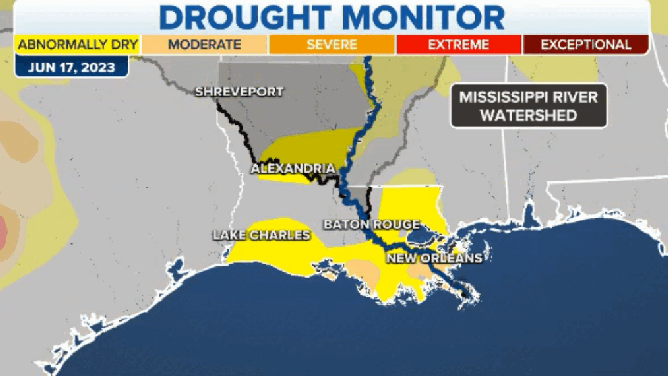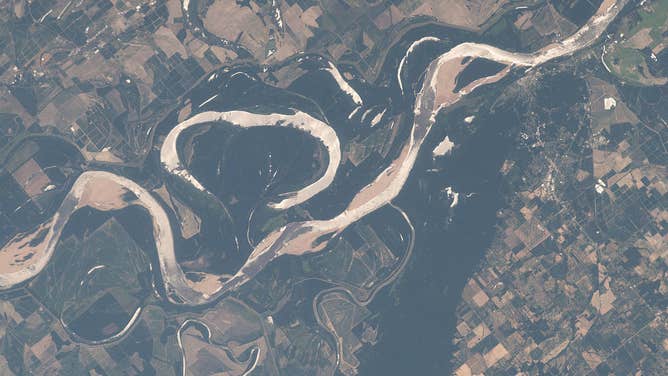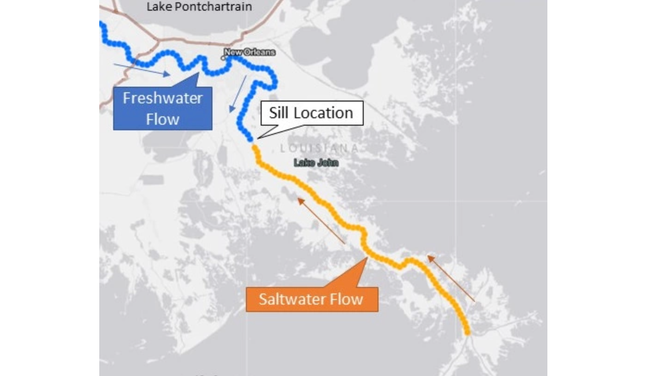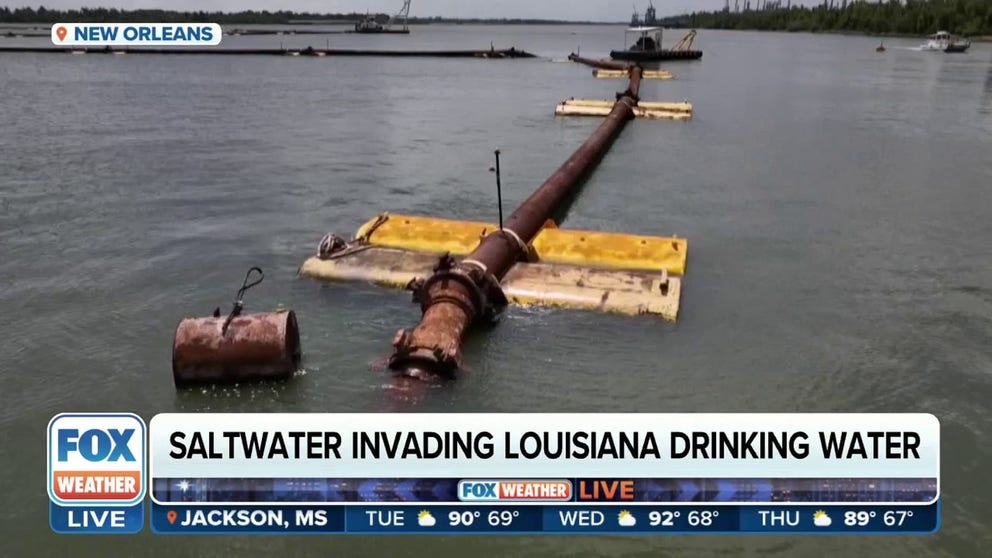Salt water threatens Louisiana drinking water supply amid Mississippi River drought
Areas in Plaquemines Parish have been impacted after salt water from the Gulf of Mexico reached the Boothville Water Treatment Plant. As salt water continues to move upstream in the Mississippi River, additional communities along the river will be impacted this fall, including New Orleans.
Louisiana drinking water threatened amid Mississippi River drought
Hydrologist Dr. Jim Connors joins FOX Weather to talk about how the salt water is getting into the Mississippi River and what that means for Louisiana residents.
Salt water from the Gulf of Mexico is intruding on the drought-stricken Mississippi River, threatening Louisiana's drinking water supply and prompting Gov. John Bel Edwards to consider requesting emergency federal help.
On Friday, the Louisiana governor said salt water continues to grow in the lower Mississippi River region because of the river's low water levels and flow rate. In July, the U.S. Army Corps of Engineers constructed an underwater barrier sill to create an artificial basin to delay the salt water intrusion; however, last week, water from the Gulf topped the sill's elevation. The governor warned additional work will be needed to slow the salt water.
Already, areas in Plaquemines Parish have been impacted after salt water reached the Boothville Water Treatment Plant. A drinking water advisory is in place from Empire Bridge to Venice on the west bank and Phoenix to Bohemia on the river's east bank because of high salt levels in the drinking water. Bottled water distribution locations are set up at local fire stations.

Drought conditions across Louisiana have significantly worsened over the summer months.
(FOX Weather)
As salt water continues to move upstream, additional communities along the river will be impacted, including New Orleans. The salt water is not likely to affect parishes upriver until mid- to late October. Water systems in St. Bernard, Orleans and Jefferson parishes will eventually be impacted. By late October, the salt water is expected to reach West Jefferson, according to the timeline provided by the U.S. Army Corps of Engineers.
The National Weather Service Mississippi River forecast shows the river will fall to historic lows in the coming weeks.

The Mississippi River, as seen from the International Space Station roughly 258 miles above the Southern region of the United States. (Image: Warren Hoburg/NASA)
(NASA)
Extreme and exceptional drought, the most severe conditions on the U.S. Drought Monitor, are found throughout 90% of Louisiana. The drought conditions and extreme heat have fueled wildfire growth this summer and the low levels found in the Mississippi River.
"Unfortunately, without any relief from the dry weather, we are starting to see the saltwater intrusion creep further up the river despite efforts to mitigate the problems by the Army Corps of Engineers," Edwards said on Friday.
Despite the situation, Bel Edwards urged residents not to panic.
"We have been through this situation before in 1988, and we are monitoring this situation very closely and applying the lessons learned," the governor said. "It is extremely important for the public to stay informed and only rely on credible sources for updates during this event."

When the salt water is expected to arrive across Louisiana.
(FOX Weather)
Teams with the U.S. Army Corps of Engineers New Orleans District are working to hold off the water from the Gulf of Mexico by raising the sill an additional 25 feet, which is expected to take about 24 days to construct.

U.S. Army Corps of Engineers New Orleans District map of the sill.
In the meantime, Louisiana is establishing a system to bring fresh water to municipal water treatment facilities via barges.
